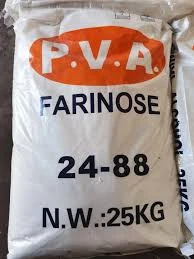Hydroxyethyl cellulose (HEC) is a non-ionic, water-soluble polymer derived from cellulose, a natural polymer found in the cell walls of plants. HEC is produced through the reaction of cellulose with ethylene oxide, resulting in a modified cellulose product that exhibits unique properties conducive to various industrial applications.
.
Another significant application of hydroxyethyl cellulose is in the field of pharmaceuticals. It serves as a thickener in topical ointments, gels, and creams, where it helps ensure uniform consistency and enhances the stability of the products. Additionally, its biocompatibility makes it suitable for various biomedical applications, including drug delivery systems. The controlled release properties of HEC-containing formulations have garnered interest for their potential to improve the efficacy of medications.
hydroxyethyl cellulose hec

Moreover, HEC plays a critical role in the food industry where it is used as a food additive. Its ability to retain moisture and improve texture makes it useful in the production of various food products. This water-retaining property is particularly beneficial in baked goods, ensuring they remain fresh and soft.
Environmental considerations regarding the production and disposal of hydroxyethyl cellulose are important. HEC is biodegradable and derived from renewable resources, aligning with the increasing demand for sustainable materials. As such, it poses fewer environmental risks compared to synthetic alternatives, contributing to the development of eco-friendlier products.
In summary, hydroxyethyl cellulose (HEC) is a versatile ingredient with a multitude of applications across various industries, including construction, pharmaceuticals, personal care, and food. Its unique properties, such as thickening, stabilizing, and moisture-retaining abilities, make it an invaluable additive that enhances product performance while aligning with sustainable practices. The ongoing research and development in the field of modified cellulose derivatives continue to explore new possibilities for HEC, further expanding its scope of use in numerous applications.
-
Rdp Powder: Key Considerations for Wholesalers in the Building Materials IndustryNewsJul.08,2025
-
Key Considerations for Wholesalers: Navigating the World of Hpmc - Based ProductsNewsJul.08,2025
-
Hpmc Detergent: Key Considerations for WholesalersNewsJul.08,2025
-
Key Considerations for Wholesalers: China Hpmc For Tile Adhesive, Coating Additives, Concrete Additives, and MoreNewsJul.08,2025
-
Crucial Considerations for Wholesalers: Navigating the World of Construction MaterialsNewsJul.08,2025
-
Key Considerations for Wholesalers Sourcing Additive For Cement, Additive For Concrete, Additive For Putty from Additive Manufacturer Shijiazhuang Gaocheng District Yongfeng Cellulose Co., Ltd.NewsJul.08,2025




